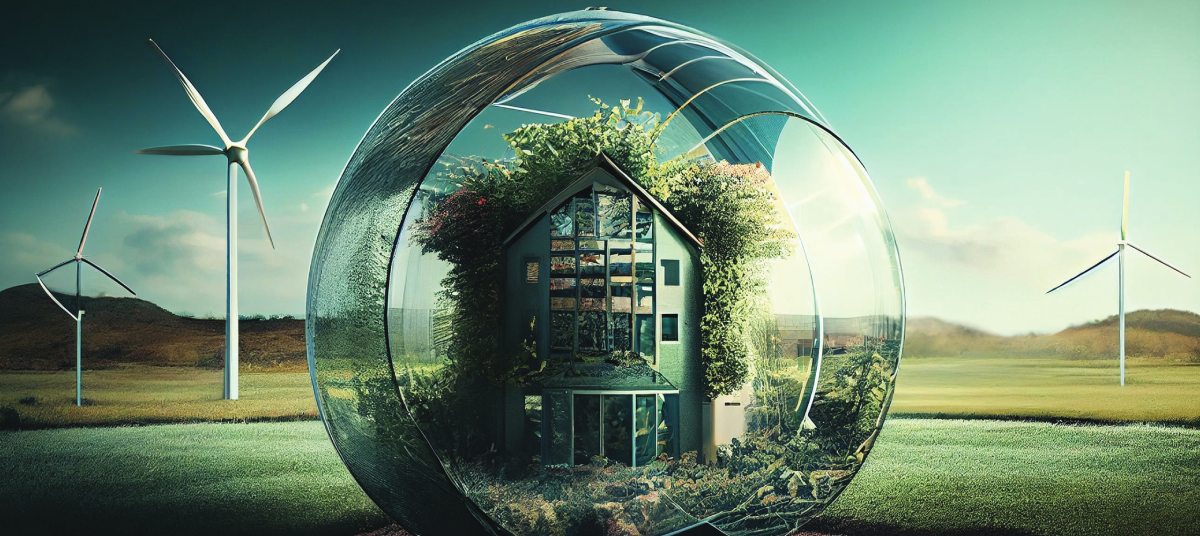
Australian home owners are embracing green home loans to combat skyrocketing energy costs while lowering their carbon footprint. Kate Aubrey explores more
With energy costs nearly tripling in some states since 2021 (according to the energy regulator) Australian borrowers are facing a real financial squeeze this winter. The cost of keeping warm in Australia’s (notoriously) badly insulated housing stock is eye-watering at the moment, adding a further strain to borrowers amid a high interest rate and inflationary environment.
In July 2023, electricity prices underwent another significant increase, rising by approximately 25 per cent (varying across states and territories).
The Australian Energy Regulator (AER) attributes the surge in energy prices to rising inflation and extreme weather events as the climate change. Indeed, the latest report from the Intergovernmental Panel on Climate Change (IPCC), released in March, revealed that the current trajectory of global greenhouse gas emissions projections means it is likely that global warming will exceed 1.5 degrees Celsius during the 21st century. Human-caused climate change is already affecting many weather and climate extremes in every region across the globe and has led to widespread adverse impacts.
While Australia has committed to achieve net-zero emissions by 2050 – mostly through renewable energy investments – home owners are taking matters into their own hands by focusing on the energy efficiency of their homes to curb their escalating energy bills and lower emissions.
The heating and cooling of households account for around 40 per cent of energy consumption, while buildings contribute approximately 23 per cent of Australia’s total emissions. Around half of that originate from homes, according to the Australian Sustainable Built Environment Council (ASBEC).
As a result, Australian home owners are keenly aware that transitioning to energy conservation and renewable sources is one of the most effective ways they can take action to reduce residential emissions. The enthusiasm for energy efficiency is evident, with Australia having the highest uptake of rooftop solar energy in the world, with nearly 3.2 million installations or around 30 per cent of all homes.
To finance these energy-efficient products, Australians are turning to green loans, offering a sustainable solution to funding eco-friendly home improvements.
According to a national survey conducted by Gateway Bank in 2021 and 2022, comprising over 1,000 interviews, nearly eight in 10 respondents expressed their willingness to install features like solar panels to qualify for green home loans, a 2 per cent increase from the previous year.
Moreover, 41 per cent of respondents demonstrated familiarity with eco-friendly products available in the market, up from the previous year’s 35 per cent.
Green loans
A green home loan encourages borrowers to buy or build their future homes in an environmentally friendly way by offering discounted interest rates for homes that meet eco-friendly certifications.
Among the array of green renovations that home owners can undertake to improve the efficiency of their home are solar battery storage systems, electric vehicle charging stations, solar or gas hot water systems, solar pool heaters, rainwater tanks, water pumps, greywater treatment systems, and better insulation.
Additionally, certified double glazing for windows, split systems, evaporative coolers, or star-rated zoned air-conditioning units with energy ratings of either 4/6 stars or 6/10 stars and energy-efficient LED lights can qualify.
These products not only help them reduce heating/air-conditioning “leaking” from the houses (which in turn requires more energy to be used to create heat/cooling) but also help increase renewable energy generation and are becoming increasingly popular.
Chief operating officer at Gateway Bank, Zeb Drummond, says that while green mortgages still remain “niche”, there has been a notable increase in both inquiry for, and settlements of, green home loans in the last financial year.
“A key trend we are seeing in this market segment is the average loan size being significantly larger than a ‘traditional’ home loan as homes with the required energy efficient attributes are at a higher price point,” Mr Drummond explains.
It’s not just houses that are in the spotlight, more large unit developments are being constructed with an environmental and energy-efficient ethos, too.
But, despite increased demand, many interested borrowers are unable to meet the appropriate energy-efficient certification levels.
Mr Drummond believes this trend will “remain a challenge in the short to medium term” as established housing stocks remain largely energy-inefficient.
In fact, CSIRO data reported that only 21 per cent of new homes built so far this year (2023) have received the goal of a 7-star rating or higher; the level required to qualify for a green loan.
But action is being taken. The National Construction Code (NCC) 2022, effective from 1 May 2023, requires all new-build homes to achieve a 7-star NatHERS rating, automatically making them eligible for a green home loan.
“Changes to the building code that came into effect this year for new builds are a positive step towards energy-efficient properties that can qualify for our green products and [are] something we anticipate will support demand into the future,” Mr Drummond says.
Green lenders
Given rising demand and necessity for green homes, more lenders in Australia are now offering green home loans or discounted personal loans to support energy-efficient builds, renovations, or purchase upgrades.
Most lenders cap the total mortgage value between $1.5 million and $3 million.
Among the prominent players, all of the big four banks provide some form of green home loan, with the Commonwealth Bank (CBA) and National Australia Bank (NAB) offering discounts on full mortgages.
CBA recently expanded its green financing range to include support for home loan and personal loan customers looking to purchase electric and hybrid vehicles. Similarly, NAB offers a discounted personal loan for energy-efficient home upgrades.
Australian and New Zealand Bank (ANZ) offers a mortgage top-up for sustainability renovations and electric/hybrid vehicle purchases. Westpac extends green loans to individuals and customers, offering fixed-rate discounts for sustainable purchases like solar panels and batteries.
In addition, NAB and Bank Australia home loan customers are also eligible to receive a 5 per cent rate reduction on the cost of lenders mortgage insurance (LMI) through insurance partner QBE.
Other green home loan lenders include Regional Australia Bank, Loans.com.au, RACQ Bank, Bank Australia, Gateway Bank, and Firstmac.
Gateway Bank, for instance, offers three green home loan products for home owners and investors, providing a discounted rate for the entire loan tenure. Additionally, it has introduced a new Green Commercial Property Loan, offering rewards to buyers whose commercial property meets eco-friendly criteria.
Firstmac offers a green home loan or construction loan for new builds or homes that are less than one-year-old. They also offer solar and green car loans, as the demand for these eco-friendly products continues to rise.
According to Firstmac’s chief financial officer James Austin, consumers are increasingly considering solar installations to reduce energy consumption and costs while benefiting the environment.
He added: “We’ve seen brokers arrange for cross-referrals from businesses including solar installers and green builders, which generate a new flow of leads for them which wouldn’t exist without these products.”
Embracing eco-friendly financing options not only offers financial benefits but also enables individuals to contribute to a more sustainable future for generations to come.
